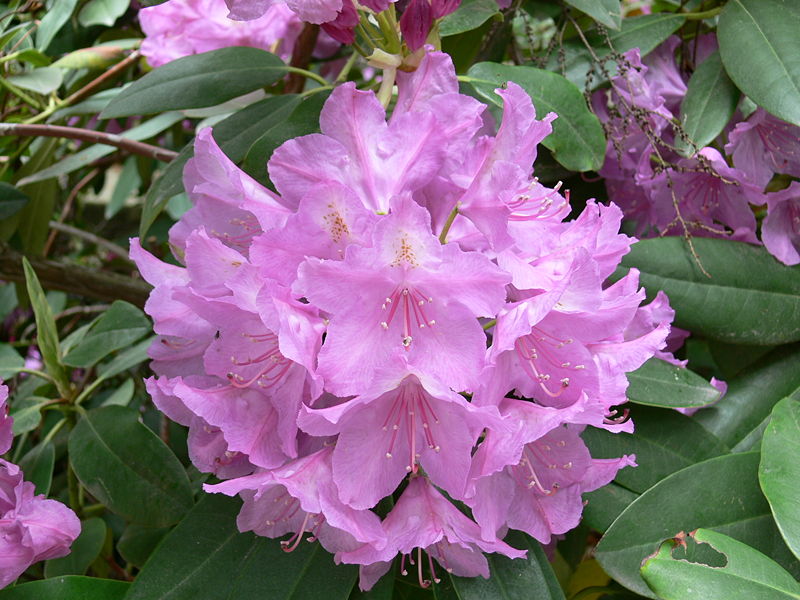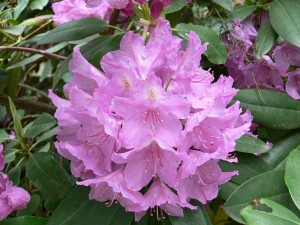On the 20th and 21st of February we had our annual School of Natural Sciences Postgraduate Symposium. Over the course of two days many of our PhD students presented their work to the School. We also had two interesting plenary talks from Dr Sophie Arnaud-Haond (Ifremer) and Dr Lesley Morrell (University of Hull). Unfortunately our third speaker, Dr Fiona Jordan (University of Bristol) had to cancel due to illness.
For those of you who are interested in exactly what we work on here at EcoEvo@TCD, here are the abstracts from the PhD student presentations. Check out the TCD website for more details!
Brian Murphy: The biocontrol and biofertilisation potential of fungal root endophytes
Fungal infections of crops are often devastating and costly. However, not all fungal infections are detrimental, and some are beneficial. Beneficial root infections often involve symbiotic root endophytes. Benefits to plants infected with endophytic root fungi include an increase in seed yield, enhanced resistance to pathogens and improved stress tolerance. Here, we report that grain yield in cold-stressed barley can be significantly increased after inoculation with a fungal root endophyte provided that a threshold level of nutrients is provided. We also show that endophytes derived from a wild barley species may provide similar benefits for barley grown under drought stress with low nitrogen input. These results suggest that locally-derived fungal root endophytes may have potential for reducing agricultural nitrogen input whilst maintaining acceptable yield. The full potential of these organisms is still to be determined and further studies are urgently required to develop specific beneficial root– endophyte associations, or combination of them, that are tailored to particular crops for maximum impact in agriculture. Many fungal root endophytes are amenable to axenic culture, sporulate readily and can be multiplied rapidly, suggesting that they could be developed as effective crop treatments in stressed crops and may have the potential to increase crop yield provided that the environmental and partner-specific conditions are met. The discovery of previously unrealised benefits associated with these fungi holds great future promise for developing economically and ecologically viable crop
Alwynne McGeever: The quantification of tree population dynamics*
*Highly commended
This project aims to quantify how the populations of Elm and Pine have changed geographically in Europe over the last 6000 years. Achieving this involves 3 tasks; (1) collecting pollen data on these species from the European pollen database (EPD), (2) comparing the timing of events in the populations at different geographic scales using the R package Bchron and (3) a focused study on the dynamics of Scots Pine in Ireland. Task 3 has two sub-tasks; (a) investigating the native status of Scots pine in Ireland, (b) investigating the past growth of Scots pine on bog surfaces in Ireland. This work will discuss the progress so far. Data has been successfully obtained from the EPD. Probability distributions of when events in the populations occurred in Ireland, the UK and Austria have been plotted, allowing the timing and synchronicity to be compared. The growth of Scots pine on bog surfaces in Ireland in the lead up to the Pine decline was also analysed, for which there were 3 distinct phases over the last 9000 years. The principle remaining work involves plotting events for every country in Europe and extracting pollen from a core to investigate a putative native population of Scots pine in the Burren, Co. Clare.
Aidan Walsh: The identification of important areas of plant diversity in Ireland
Records of vascular plants from the island of Ireland have been collated into a single plant distribution database. Rare and threatened plant species records were identified and subsequently mapped at the tetrad (2km by 2km) scale. We examined the overlap in spatial coverage between areas designated for the protection of biodiversity in Ireland and tetrads containing rare and threatened plant species. A proportion of the locations of these species occurred in the wider countryside and will not benefit from the protection provided by designated areas. For example, 22% of tetrads with records of Flora Protection Order species occurred outside of designated areas in the Republic of Ireland. The combination of designated areas and landscape within 4km of the designated areas contained over 90% of the locations where records of rare and threatened plant species occurred. These results indicate the importance of both designated areas and the wider countryside for biodiversity conservation, and offer an opportunity for the spatial targeting of conservation actions. The project will ultimately develop a method to identify important areas of plant diversity at the tetrad and hectad (10km x 10km) scale.
Susannah Cass: Is the grass ‘greener’? Biodiversity impacts of legume-supported grasslands.
Biodiversity is of great importance for the delivery of many key ecosystem services in agriculture (Altieri and Rogé, 2010) such as pollination, weed suppression, soil conditioning and pest control. Legume crops have a long history of use in traditional agricultural systems for the ability to fix atmospheric nitrogen (Graham and Vance, 2000) but have suffered a decline due to the ready supply of cheap inorganic fertilisers over recent decades (Graham and Vance, 2003). The Legume Futures project (EU FP7) aimed to investigate the potential for promotion of wide-spread legume-supported cropping in Europe, and the potential environmental impacts of such systems. We surveyed non-crop vegetation and earthworm (Lumbrucideae) biodiversity in semi-permanent and permanent agricultural grasslands, with and without legumes, at four established field sites belonging to the Legume Futures consortium (www.legumefutures.de). We found that responses to legume-supported cropping were different for non-crop vegetation and earthworms, and were dependent on the measure of biodiversity – abundance, species richness, diversity indices etc – considered. Mixed grass-legume swards supported more even and more diverse (Shannon’s H’ Index) non-crop vegetation communities but had less obvious impacts on earthworm communities.
Danielle McLaughlin: The molecular and morphological impact of notochord manipulation on the foregut in 3D explant culture
The notochord is a vital structure of vertebrate embryos, defining the anterior-posterior axis and strongly influencing molecular patterning and morphology of adjacent tissues such as the dorsally located neural tube. Despite their close proximity, the influence of the notochord on the ventrally located foregut as it separates to form oesophagus and trachea is undetermined. Oesophageal atresia is a relatively common congenital birth defect of unknown aetiology in which irregular foregut separation results in discontinuity of the oesophagus. In a well established model of this condition, the adriamycin mouse model, structural abnormalities of the notochord, frequently referred to as branches, are a distinctive feature. These notochord branches have a clear association with the site and severity of co-existing tracheo- oesophageal malformations. Further clinical and experimental examples of developmental disruption of the notochord occurring in conjunction with gastrointestinal tract anomalies including oesophageal atresia exist. We hypothesise that the notochord contributes essentially to the outcome in oesophageal formation and we have established an in vitro technique of 3D explant culture to examine the morphological and molecular impact of physical notochord
Sarah Hearne*: Limitations of the Fossil Record in Understanding Macroecological Trends
*Unfortunately Sarah was unable to attend but we still have her abstract
“To know your future, you must know your past” (Margaret Jang)
Since the fossil record was first recognised as the history of life on earth it has been an invaluable aid to understanding the evolution and diversity of life. It has been used to help explain and understand past and present distribution of biota across the globe and has increasingly informed our understanding of how life reacts to changes whether sudden, such as asteroid impacts, or gradual, such as climate change. Yet there are a host of biases inherent in the fossil record that make interpretation difficult. Many of these biases are either unknown or ignored by many researchers despite the fact that they are significant and limit the ability of the fossil record to reveal macroecological trends. Until these biases are accepted as problematic and efforts are made to counter them, macroecological interpretations of the fossil record will be little more than speculation.
Paul Egan: Variation of nectar toxins in space, time and habitat – is there evidence for functional significance?
The presence of toxic secondary metabolites in nectar represents somewhat of an ecological paradox. Although a number of explanations have been offered which pose a functional significance of this phenomenon; empirical tests of these hypotheses remain scarce. Here we employ use of an invasive species (Rhododendron ponticum) ideally suited as a model system, and investigate expression of diterpene grayanotoxins in nectar. Through comparisons within and between the species’ native and invasive range, possible post-invasion evolution and plasticity of this trait is explored in response to a number of spatial and environmental factors. In addition, a functional basis to toxic nectar is tested through examination of two potentially opposing processes: A.) if or how toxin levels are regulated in nectar over the course of phenological development of flowers, and B.) the extent to which phenotypic correlation with other plant tissues may in fact explain expression of toxins in nectar (e.g. as due to anti-herbivore defence in phloem, leaves, flowers etc.). In general, our findings reveal some important factors which influence nectar toxicity, indicative of both independent and adaptive regulation of this trait within plants. Our current studies seek to further test this purported adaptive function, examining the simultaneous and opposing selection pressures posed by pollinators and herbivores on toxin production, and the resultant impact on plant fitness.
Image Source: Wikicommons


